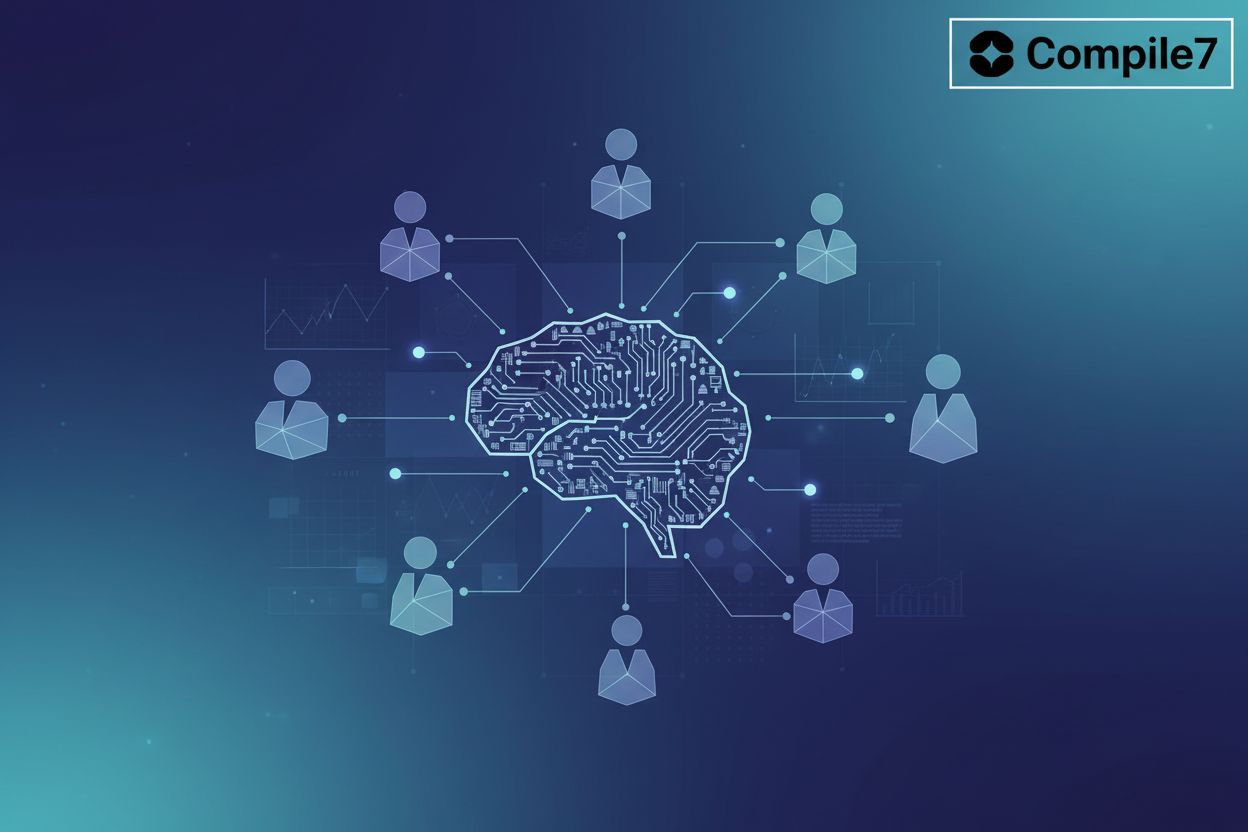Demystifying AI Agent Decisions: A Guide to Explainability with LIME and SHAP
TL;DR
The Imperative of Explainable AI (XAI) in AI Agent Deployments
AI agents are rapidly transforming how businesses operate, but can we always trust their decisions? The need to understand why an AI agent made a specific choice is more critical than ever.
Building trust and confidence: Explainable AI (XAI) helps users understand the reasoning behind an AI agent's decisions. This understanding fosters trust and encourages the adoption of AI solutions across various departments.
Meeting regulatory compliance and ethical AI standards: Many industries face increasing regulatory scrutiny regarding AI deployments. XAI provides the transparency needed to demonstrate compliance with ethical AI standards and legal requirements.
Identifying and mitigating potential biases: By understanding the factors influencing an AI agent's behavior, you can identify and address potential biases in the training data or algorithms, ensuring fair and equitable outcomes.
Improving AI agent performance: XAI enables developers to analyze the decision-making processes of AI agents, pinpoint areas for improvement, and optimize performance.
Customer service AI: XAI can explain why a customer request was routed to a specific agent or why a particular solution was recommended, improving customer satisfaction and agent efficiency.
Data analysis AI: By understanding the factors driving insights and predictions generated by AI-powered analytics tools, businesses can make more informed decisions based on reliable data.
Process automation: Tracing the steps taken by an AI agent to automate a business process helps identify potential bottlenecks and ensure smooth, efficient operations.
Content Creation AI: XAI can help content creators and businesses understand why certain content was generated to align with brand guidelines, ensuring consistency and quality.
Enhanced decision-making: Clear, understandable AI insights lead to better-informed decisions at all levels of the organization.
Reduced risk of errors and biases: Transparent AI helps minimize the risk of errors and biases in AI-driven processes, leading to more reliable and trustworthy outcomes.
Increased stakeholder buy-in: When stakeholders understand how AI agents work, they are more likely to support and adopt AI solutions.
Improved auditability and optimization: XAI makes it easier to audit and optimize AI agent performance, ensuring continuous improvement and alignment with business goals.
As Datacamp notes, transparency and fairness are key principles in building trust through XAI.
Understanding the need for explainability sets the stage for exploring specific techniques like LIME and SHAP, which we'll delve into next.
LIME and SHAP: Powerful Tools for Explaining AI Agent Decisions
Imagine trying to understand why an AI agent denied a loan application – was it income, credit history, or something else? LIME and SHAP are powerful tools that help us dissect these "black box" decisions, bringing transparency to AI agent behavior.
LIME (Local Interpretable Model-agnostic Explanations) focuses on explaining individual predictions. It approximates the AI agent's complex decision-making process with a simpler, interpretable model locally, around a specific decision. This means LIME helps you understand which features were most important in that specific instance.
- LIME works by perturbing the input data (making slight changes) and observing how the AI agent's prediction changes. It then trains a simple, interpretable model (like a linear model) on these perturbed samples, weighted by their proximity to the original instance.
- In customer service, LIME can explain why an AI agent routed a customer to a specific department. For example, if a customer with a billing question also mentioned a technical issue, LIME could show that both "billing" and "technical" keywords contributed to the routing decision.
- One advantage of LIME is its simplicity and speed. However, because it only provides local explanations, it might not accurately reflect the AI agent's global behavior.
SHAP (Shapley Additive exPlanations) uses concepts from game theory to explain AI agent decisions. It calculates Shapley values, which quantify the contribution of each feature to the prediction.
- SHAP assigns each feature a value representing its impact on the prediction, considering all possible combinations of features. This provides both local (instance-specific) and global (overall) insights into feature importance.
- In the financial industry, SHAP can identify the most important factors influencing customer churn predictions. For instance, it might reveal that "number of transactions" and "average account balance" are the strongest indicators of churn, both locally for individual customers and globally across the entire customer base.
- While SHAP can be more accurate than LIME, it's also computationally intensive, especially for complex models. KernelSHAP, a common implementation, uses an approximation method when exact computation is infeasible, making it more manageable for larger datasets.
LIME and SHAP both offer valuable ways to understand AI agent decisions, but they have different strengths. LIME excels at local interpretability and computational speed, while SHAP provides both local and global insights, though at a higher computational cost.
When choosing between LIME and SHAP, consider the specific goals and requirements of your explainability project. Do you need quick explanations for individual decisions, or a comprehensive understanding of the AI agent's overall behavior?
Next, we'll explore how to effectively implement LIME and SHAP in real-world AI agent deployments.
Implementing LIME and SHAP for AI Agent Explainability: A Practical Guide
Ready to bring your AI agent's decisions into the light? Implementing LIME and SHAP can seem daunting, but breaking it down into manageable steps makes the process much clearer.
Here’s a practical guide to implementing LIME and SHAP for AI agent explainability:
- Preparing Your AI Agent Data: Data quality is paramount. Ensure your data is complete, accurate, and properly preprocessed. Feature engineering, selection, and appropriate handling of categorical and numerical features are essential for optimal results.
- For tabular data: This might involve one-hot encoding categorical variables, scaling numerical features, or creating interaction terms. For example, if you have 'age' and 'income', you might create an 'age_x_income' feature if you suspect their interaction is important.
- For text data: This typically involves tokenization, stemming/lemmatization, and converting text into numerical representations like TF-IDF or word embeddings. For instance, you'd clean text by removing punctuation and stop words before creating numerical features.
Python provides powerful libraries to implement LIME and SHAP. Here's how to use them:
- Install Libraries: Use
pip install lime shapto install the necessary packages. - Load Data and Model: Load your AI agent's data and the trained model into your Python environment.
- Generate Explanations: Use LIME and SHAP functions to generate explanations for individual predictions and global feature importance.
- Example: For a fraud detection AI agent, LIME can highlight which transactions triggered a specific fraud alert.
- Visualize Results: Use plotting functions to visualize the results and interpret the findings.
LIME focuses on local explanations, providing insights into individual predictions, while SHAP offers both local and global perspectives.
Here's an example of how LIME might be implemented:
import lime
import lime.lime_tabular
import sklearn.ensemble
from sklearn.model_selection import train_test_split
import pandas as pd
import numpy as np # Added for demonstration
Sample data - replace with your actual data
data = pd.DataFrame({
'feature1': np.random.rand(100) * 10,
'feature2': np.random.rand(100) * 5,
'categorical_feature': np.random.choice(['A', 'B', 'C'], 100),
'target': np.random.randint(0, 2, 100)
})
Basic preprocessing for demonstration
data['feature1_scaled'] = (data['feature1'] - data['feature1'].mean()) / data['feature1'].std()
data['feature2_scaled'] = (data['feature2'] - data['feature2'].mean()) / data['feature2'].std()
data = pd.get_dummies(data, columns=['categorical_feature'], prefix='cat')
X = data.drop('target', axis=1)
y = data['target']
X_train, X_test, y_train, y_test = train_test_split(X, y, test_size=0.2, random_state=42)
model = sklearn.ensemble.RandomForestClassifier(random_state=42)
model.fit(X_train, y_train)
LIME Explanation
explainer_lime = lime.lime_tabular.LimeTabularExplainer(
training_data=X_train.values,
feature_names=X_train.columns.tolist(),
class_names=['0', '1'],
mode='classification'
)
instance_lime = X_test.iloc[0]
explanation_lime = explainer_lime.explain_instance(
data_row=instance_lime.values,
predict_fn=model.predict_proba
)
explanation_lime.show_in_notebook(show_table=True) # Uncomment to display in notebook
print("LIME Explanation for instance 0:")
for feature, weight in explanation_lime.as_list():
print(f"- {feature}: {weight:.4f}")
And here's how you might implement SHAP for explanations and visualizations:
import shap
import matplotlib.pyplot as plt
import pandas as pd
import numpy as np
import sklearn.ensemble
from sklearn.model_selection import train_test_split
Assuming X_train, X_test, y_train, y_test, and model are already defined from above
SHAP Explanation
Use the KernelExplainer for general models, or TreeExplainer for tree-based models
if isinstance(model, (sklearn.ensemble.RandomForestClassifier, sklearn.ensemble.GradientBoostingClassifier)):
explainer_shap = shap.TreeExplainer(model)
else:
explainer_shap = shap.KernelExplainer(model.predict_proba, shap.sample(X_train, 100)) # Sample for background
Calculate SHAP values for the test set
shap_values = explainer_shap.shap_values(X_test)
--- SHAP Visualization Examples ---
1. Summary Plot (Global Feature Importance)
print("
SHAP Summary Plot:")
shap.summary_plot(shap_values[1], X_test, plot_type="bar", show=False) # For class 1
plt.title("SHAP Summary Plot (Global Feature Importance)")
plt.tight_layout()
plt.show()
2. Dependence Plot (Feature Interaction)
print("
SHAP Dependence Plot for 'feature1_scaled':")
shap.dependence_plot("feature1_scaled", shap_values[1], X_test, interaction_index="feature2_scaled", show=False) # For class 1
plt.title("SHAP Dependence Plot (feature1_scaled vs. feature2_scaled)")
plt.tight_layout()
plt.show()
3. Force Plot (Local Explanation for a single instance)
print("
SHAP Force Plot for instance 0:")
shap.initjs() # Initialize Javascript for plotting
For binary classification, shap_values might be a list of arrays (one per class)
We'll plot for class 1
shap.force_plot(explainer_shap.expected_value[1], shap_values[1][0,:], X_test.iloc[0,:], show=False)
plt.title("SHAP Force Plot (Instance 0, Class 1)")
plt.tight_layout()
plt.show()
This code trains a simple random forest classifier and uses LIME to explain a single prediction. It also demonstrates how to generate and visualize SHAP explanations, including global feature importance (summary plot), feature interactions (dependence plot), and local explanations for individual instances (force plot).
Next, we'll explore how to interpret and visualize the results you get from LIME and SHAP.
Addressing Challenges and Limitations of LIME and SHAP
Is explainability always straightforward? LIME and SHAP are powerful tools, but they come with their own set of challenges. Understanding these limitations is crucial for responsible AI agent deployment.
One significant challenge is the computational cost, especially when dealing with large datasets or complex models. Calculating Shapley values, in particular, can be computationally intensive. To address this, consider these strategies:
- Optimize performance: Use efficient implementations of LIME and SHAP, such as TreeSHAP for tree-based models, which offers a faster alternative to KernelSHAP.
- Approximation techniques: Employ approximation methods to reduce computational time. For instance, KernelSHAP provides an approximation method when exact computation is infeasible.
- Cloud computing: Leverage cloud computing resources to scale your computations. Cloud platforms offer the necessary infrastructure to handle large datasets and complex calculations.
Feature collinearity, where independent variables in a model are correlated with each other, can also affect the results. Here's how to mitigate its impact:
- Understand the impact: Recognize that collinearity can distort the feature importance rankings provided by LIME and SHAP.
- Mitigation techniques: Use feature selection or dimensionality reduction techniques to reduce collinearity before applying explainability methods.
- Alternative methods: Explore alternative explainability methods that are less sensitive to collinearity. Permutation Importance is one such method, where feature importance is assessed by shuffling feature values and observing the impact on model performance.
The accuracy and reliability of LIME and SHAP explanations are also vital. Ensure you:
- Evaluate explanations: Assess the fidelity of the explanations by comparing them to ground truth data or expert knowledge.
- Validation techniques: Use techniques to validate explanations, such as sensitivity analysis, which involves slightly changing the input features and observing how the explanations change.
- Be aware of attacks: Stay informed about potential adversarial attacks on explainability methods, where malicious actors try to manipulate explanations to mislead users.
Addressing these challenges ensures that LIME and SHAP provide meaningful and reliable insights into AI agent decisions, paving the way for greater trust and transparency.
Best Practices for Integrating Explainability into Your AI Agent Development Lifecycle
Integrating explainability into your AI agent development lifecycle is like adding a quality control checkpoint. It ensures your AI agents are not only effective but also transparent and trustworthy.
Establish SMART goals: Set Specific, Measurable, Achievable, Relevant, and Time-bound goals for AI agent explainability.
Define key metrics: Determine which metrics will indicate progress and success in achieving explainability. For example, you might measure the percentage of decisions that can be clearly explained to stakeholders.
Align with business objectives: Ensure that explainability goals support broader business objectives, such as increasing customer trust or complying with regulations. For instance, in the financial sector, explaining loan decisions can help meet compliance requirements.
Establish specific metrics for measuring the success of explainability goals: Clearly define metrics like explanation accuracy, user satisfaction with explanations, and the time it takes to generate explanations.
Choose interpretable models: Opt for inherently interpretable AI agent models when possible. Linear models or decision trees are easier to understand than complex neural networks. LIME and SHAP are particularly valuable when inherently interpretable models are not feasible or sufficient, as they can help explain even complex, "black box" models by approximating their behavior locally or globally.
Design transparent workflows: Develop AI agent workflows with explainability in mind. For example, include steps to log decision-making processes and feature importance.
Document processes: Clearly and transparently document AI agent decision-making processes. This documentation should be accessible to both technical and non-technical stakeholders.
Explanation Accuracy: Measure how accurately the explanation reflects the AI agent's decision-making process.
User Satisfaction: Collect feedback from users on how helpful and understandable the explanations are.
Time to Generate Explanations: Track how long it takes to generate explanations, ensuring they are provided in a timely manner.
Prioritizing explainability from the outset makes AI agents more reliable and easier to manage.
The Future of AI Agent Explainability and Interpretability
The quest for truly transparent AI agents continues, but where is this journey headed? As AI becomes more integrated into our daily lives, understanding the future of AI agent explainability and interpretability is crucial for responsible innovation.
Researchers are actively working on developing more robust and reliable explainability methods. The focus is on ensuring that explanations are consistent, accurate, and resistant to manipulation.
Tailoring explanations to different audiences is another key trend. What a data scientist needs to understand is vastly different from what a business stakeholder requires.
Explainability is increasingly being integrated with other AI ethics principles, such as fairness and privacy. This holistic approach ensures that AI agents are not only understandable but also ethically sound.
Explainability plays a vital role in ensuring that AI agents are used ethically and responsibly. By understanding how AI agents make decisions, we can identify and mitigate potential risks.
Promoting transparency and accountability in AI decision-making is another critical aspect. When AI systems are transparent, it is easier to hold them accountable for their actions.
Ultimately, explainability helps build public trust in AI technology. When people understand how AI works, they are more likely to accept and adopt it.
Researchers are exploring new methods for visualizing and understanding AI agent behavior. This includes techniques like SHAP summary plots to show global feature importance and SHAP dependence plots to visualize feature interactions.
The development of tools for interactive exploration of AI explanations is also gaining traction. These tools allow users to delve deeper into the reasoning behind AI decisions and explore the factors that influence them, such as interactive SHAP force plots that let users adjust feature values to see how the explanation changes.
Making interpretability more accessible to non-technical users is essential for widespread adoption. The goal is to provide explanations that are easy to understand, regardless of the user's technical expertise.
As AI explainability and interpretability continue to evolve, staying informed about the latest advancements will be essential for anyone working with AI agents.
Conclusion: Embracing Explainability for Trustworthy AI Agents
Explainability is not just a technical requirement; it's a pathway to building trustworthy AI agents. By understanding how these agents arrive at their decisions, we can foster greater confidence in their deployment and impact.
Explainability is essential for building trust and confidence in AI agents. When stakeholders understand the reasoning behind AI-driven actions, they are more likely to embrace and rely on these systems.
LIME and SHAP are powerful tools for understanding AI agent decisions. As we've explored, LIME provides local explanations, while SHAP offers both local and global insights.
Careful planning and implementation are crucial for successful explainability projects. This includes data preparation, model selection, and appropriate use of tools like LIME and SHAP.
Embrace explainability as a core principle of your AI agent development lifecycle. Integrating explainability from the start ensures AI agents are not only effective, but also transparent and easier to manage.
Investing in AI explainability research and development leads to more robust and reliable methods. The goal is to ensure explanations are accurate and resistant to manipulation.
Promoting open-source tools and best practices for explainability fosters collaboration and innovation. LIME and SHAP are excellent examples of open-source tools that have democratized access to explainability. We encourage you to explore other open-source explainability libraries and communities to stay at the forefront of this field.
Educating stakeholders about the importance of AI transparency is crucial for building trust and acceptance. Clear communication helps bridge the gap between technical experts and end-users.
Encouraging collaboration between AI developers, ethicists, and policymakers ensures AI systems are developed and used responsibly. This interdisciplinary approach addresses ethical concerns.
By embracing explainability, we pave the way for a future where AI agents are not only intelligent but also transparent and accountable. This commitment to transparency ultimately fosters greater trust and confidence in the transformative potential of AI.







